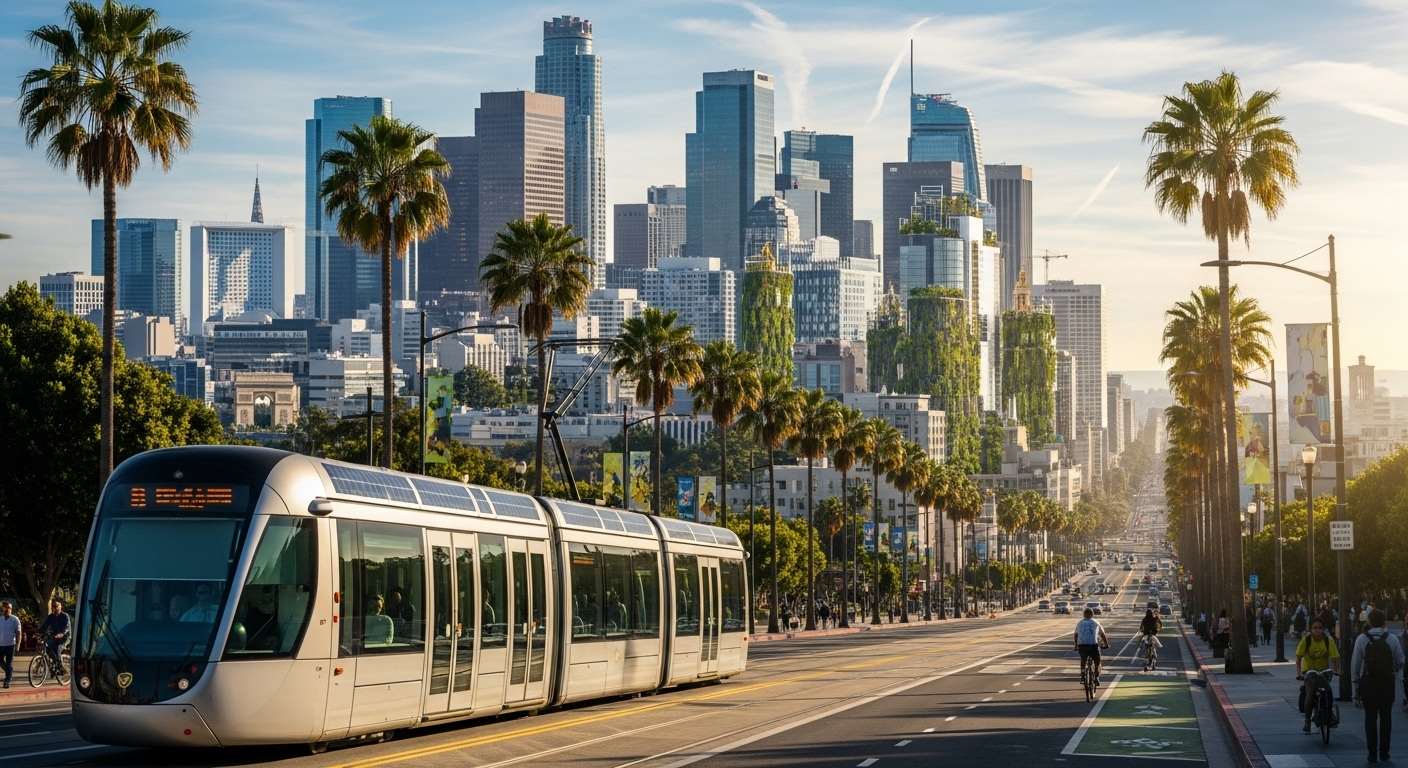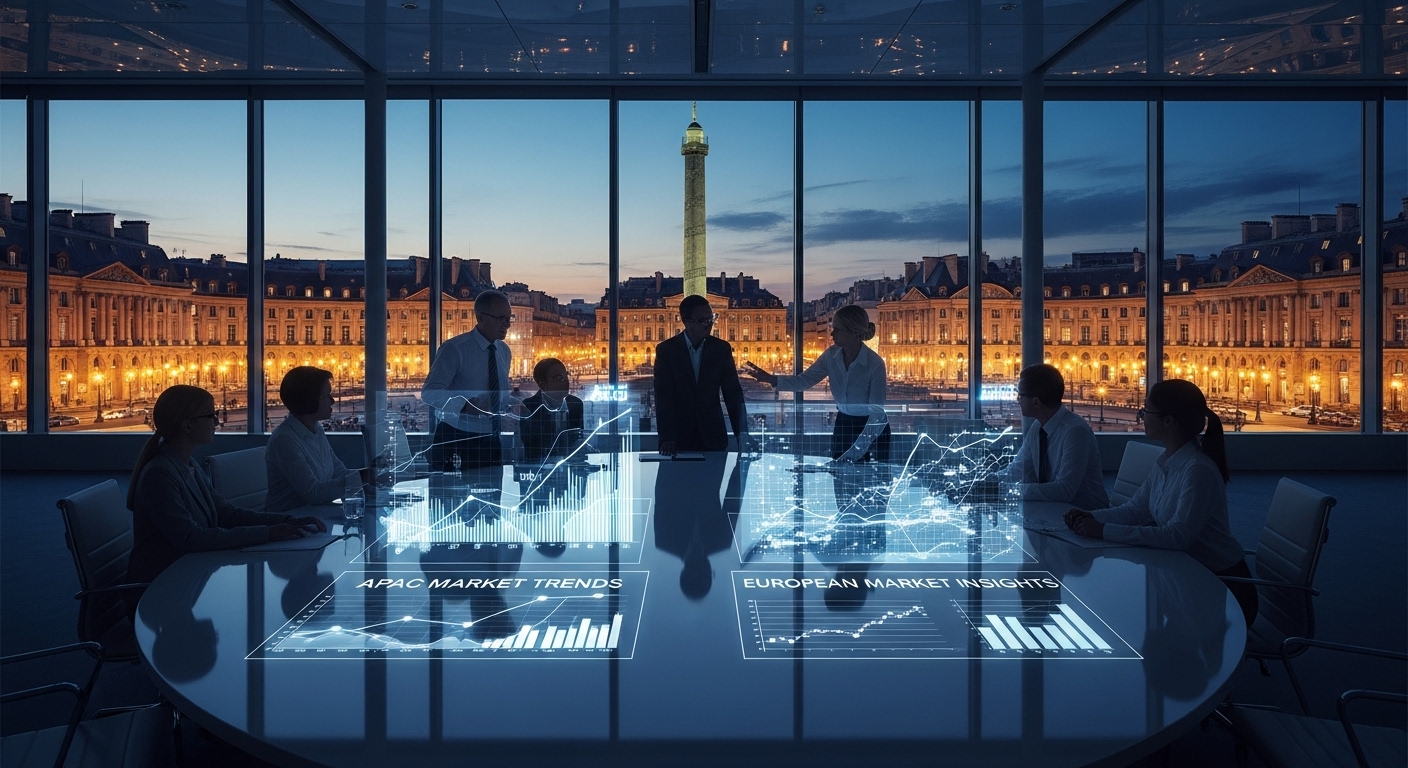In the globalized economy, the architecture of commerce is no longer confined by continental borders. While American cities have historically followed a path of sprawling, car-dependent development, a paradigm shift is underway, driven by demands for sustainability, connectivity, and a higher quality of urban life. European business districts, with their rich history of integrating commerce, culture, and community, offer a compelling blueprint for this evolution. This analysis delves into the core principles that define Europe’s most dynamic economic hubs, from Amsterdam’s transit-oriented Zuidas to Paris’s revitalized La Défense. We will explore how these time-tested strategies in urban planning—focusing on mixed-use spaces, pedestrian-centric design, and robust public transit—provide invaluable lessons for a metropolis at a crossroads. The goal is not to replicate, but to intelligently adapt these concepts to forge the next generation of business districts in sprawling urban landscapes, creating more vibrant, resilient, and human-centric centers of commerce.
The European Model: Integration of Work, Life, and Transit
At the heart of modern European business district planning is the principle of integration. Unlike the traditional American model of siloed commercial zones that empty out after 5 PM, leading European hubs are designed as dynamic, 24/7 ecosystems. A prime example is the Zuidas district in Amsterdam. Conceived as a premier international business center, its master plan deliberately weaves high-rise offices with residential towers, retail spaces, cafes, and cultural institutions. The district is anchored by a world-class transit hub, connecting it seamlessly to Schiphol Airport and the rest of the continent via high-speed rail. This transit-oriented development (TOD) approach drastically reduces reliance on cars, fostering a pedestrian-friendly environment where professionals can live, work, and socialize within a compact area. Similarly, HafenCity in Hamburg, Germany, one of Europe’s largest inner-city development projects, transforms former port areas into a vibrant mix of offices, apartments, parks, and concert halls. The design prioritizes public squares, waterfront promenades, and an extensive network of cycling and walking paths. This focus on the ‘human scale’ is critical; it creates a sense of place and community that not only attracts top-tier companies but also the skilled talent they seek. The success of these districts lies in their rejection of monofunctionality, proving that economic vitality is intrinsically linked to urban livability.
La Défense vs. Century City: A Tale of Two Modernist Visions
The parallel evolution of Paris’s La Défense and LA’s Century City offers a fascinating case study in modernist urban planning and its subsequent adaptation. Both were conceived in the post-war era as futuristic, purpose-built business districts located outside the congested historic city centers. Initially, both prioritized vehicle access and architectural grandeur, creating imposing commercial hubs defined by skyscrapers and wide avenues. However, their paths have diverged and are now converging in interesting ways. La Défense, once criticized as a sterile concrete jungle, has undergone significant transformation. The French government and planners invested heavily in improving its human experience, creating the vast Parvis, a multi-level pedestrian esplanade that separates foot traffic from vehicles, and dramatically enhancing its public transport links, making it one of the best-connected hubs in Europe. In contrast, Century City remained largely car-centric for decades. Yet, it is now embracing a similar evolution. The arrival of the Metro Purple Line extension is a game-changer, promising to integrate the district into the wider public transit network. Furthermore, new mixed-use developments are introducing residential and retail components, aiming to soften its corporate-only image. The lesson from La Défense is that even the most ambitious modernist visions must eventually bend to the human need for connectivity, walkability, and a sense of community to remain competitive and relevant in the 21st century.
Historic Cores as Economic Engines: The London and DTLA Parallel
While some business districts are built from scratch, others thrive by integrating the new within the old. The City of London, or ‘the Square Mile,’ is the quintessential example. Here, hyper-modern skyscrapers like The Gherkin and The Shard stand alongside centuries-old guildhalls and Roman walls. This dense, historic fabric presents immense planning challenges but also creates a unique and prestigious business environment. The district’s success hinges on its ability to preserve its heritage while accommodating the demands of a global financial center, supported by an incredibly dense public transport network in the London Underground. This model of revitalizing a historic core offers powerful insights for American cities. The ongoing renaissance of Downtown Los Angeles is a prime example of this parallel strategy. For years, DTLA was primarily a 9-to-5 office district, but a concerted effort in adaptive reuse has transformed historic Art Deco and Beaux-Arts buildings into trendy lofts, boutique hotels, and creative office spaces. This preservation-led development, combined with the construction of new residential towers and cultural venues like The Broad museum, has infused the area with a newfound vibrancy. By layering modern economic activity onto a rich historical foundation, both London and DTLA demonstrate that a city’s past can be one of its greatest assets in building a dynamic and resilient business ecosystem for the future.
Sustainability and Green Space: Lessons from Germany and Scandinavia
A non-negotiable pillar of contemporary European urban design is sustainability. Driven by strong public policy and a cultural emphasis on environmental stewardship, European business districts are leading the way in green innovation. Frankfurt’s Bankenviertel (Financial District) is notable not just for its skyline but for its proximity to the ‘Grüneburgpark’ and the city’s ‘Green Belt’ (Grüngürtel), a protected ring of green space that provides recreational areas and improves air quality. Many of the city’s skyscrapers are built to stringent ‘Green Building’ standards, incorporating energy-efficient facades, rainwater harvesting systems, and green roofs. Similarly, Scandinavian cities set the global benchmark. Hammarby Sjöstad in Stockholm, a former industrial area redeveloped into a sustainable district, features an integrated system for waste, water, and energy, with buildings designed for maximum efficiency and access to green courtyards and waterfront parks. These initiatives are not merely cosmetic; they are strategic economic tools. High-quality green spaces and verifiably sustainable buildings are powerful magnets for attracting and retaining top global talent, who increasingly prioritize well-being and environmental responsibility. As companies worldwide adopt ambitious ESG (Environmental, Social, and Governance) goals, locating in a district that reflects these values becomes a crucial part of their corporate identity and brand.
The ’15-Minute City’ Concept: Applying Parisian Principles to a Polycentric Metropolis
The ’15-minute city’ concept, famously championed by Paris Mayor Anne Hidalgo, represents a radical reimagining of urban life. The core idea is to de-centralize the city, ensuring that residents can access all their essential needs—work, shopping, healthcare, education, and leisure—within a 15-minute walk or bike ride from their homes. While initially conceived for a dense, historic city like Paris, its underlying principles have profound implications for sprawling, polycentric metropolises. The goal is to create a ‘city of neighborhoods,’ where each district functions as a more self-sufficient, walkable, and livable community. This approach directly tackles issues of traffic congestion, air pollution, and social isolation that plague many large urban areas. Applying this concept requires a shift in zoning to encourage more mixed-use development at the neighborhood level. For a vast urban expanse like Los Angeles, implementing a city-wide 15-minute model is a monumental challenge. However, the strategy can be powerfully applied on a district-by-district basis. Hubs like Culver City, Hollywood, and Pasadena can be further developed to enhance their local amenities, improve cycling infrastructure, and strengthen their community cores, reducing the need for residents and workers to undertake long, cross-town commutes for daily necessities. This fosters stronger local economies and a higher quality of life, transforming disparate neighborhoods into a network of vibrant, connected villages.
Forging the Future: A Hybrid Blueprint for Southern California
The ultimate lesson from Europe is not to simply copy-paste its urban solutions, but to synthesize its principles into a hybrid model that respects local context. The future of LA’s business districts lies in this intelligent adaptation. It involves embracing the city’s inherent polycentric structure while weaving in European-inspired strategies of densification, transit integration, and human-centric design. This means continuing to invest in the expansion of the Metro system to better connect key economic nodes like Downtown, Century City, and Silicon Beach. It requires zoning reforms that encourage the development of ‘complete neighborhoods’ with a rich mix of housing, offices, retail, and public spaces, moving away from single-use districts. The push for sustainability, drawing from German and Scandinavian examples, can manifest in new building codes that mandate green roofs, solar panels, and water conservation systems, which are especially critical in a water-scarce region. The ongoing transformation of the business landscape in Los Angeles provides a unique canvas to paint this new vision. By blending its own culture of innovation and creativity with the European focus on livability and sustainability, the city can create a network of business districts that are not only economically powerful but also resilient, equitable, and truly desirable places to live and work.
In conclusion, the evolution of European business districts provides a rich playbook for American cities seeking to build more competitive and sustainable urban centers. The core themes of integration, sustainability, historical adaptation, and human-scale design offer a clear counter-narrative to the 20th-century model of car-centric, monofunctional commercial zones. From the transit-first planning of Amsterdam’s Zuidas to the ambitious ’15-minute city’ vision in Paris, these strategies highlight a fundamental truth: the most successful business hubs are those that prioritize the well-being of people. For a city as dynamic and forward-looking as Los Angeles, these are not just abstract ideals but practical tools for addressing critical challenges like traffic, housing, and climate change. The path forward is not about abandoning its unique identity but enhancing it. By thoughtfully integrating these transatlantic lessons, Los Angeles has the opportunity to redefine the American business district, creating a network of vibrant, connected, and resilient economic centers that will power its future for decades to come.





